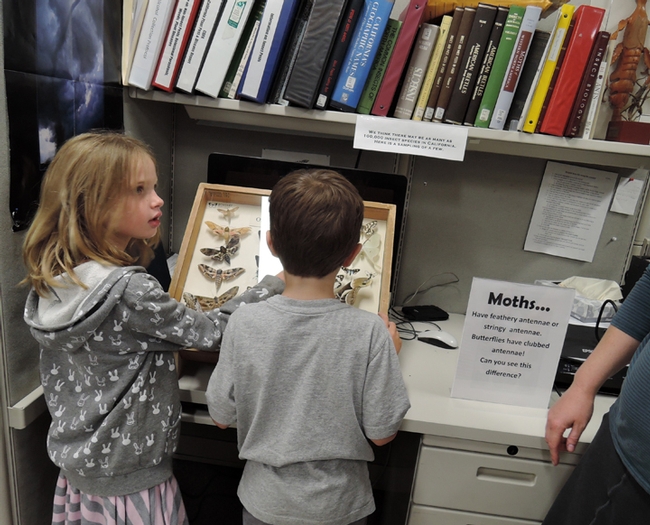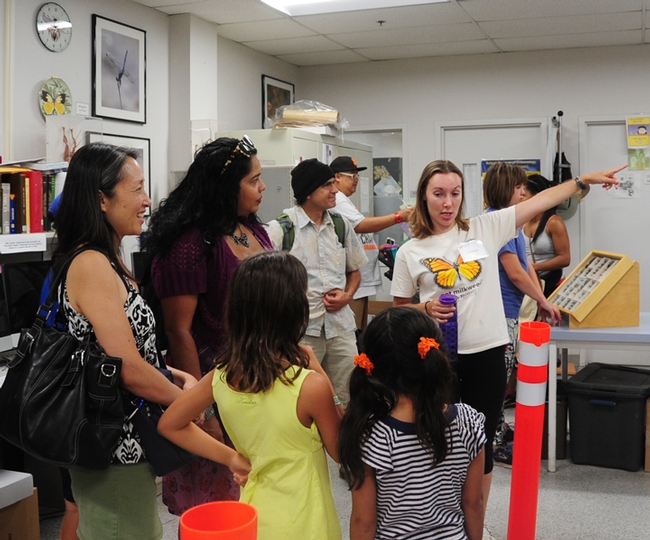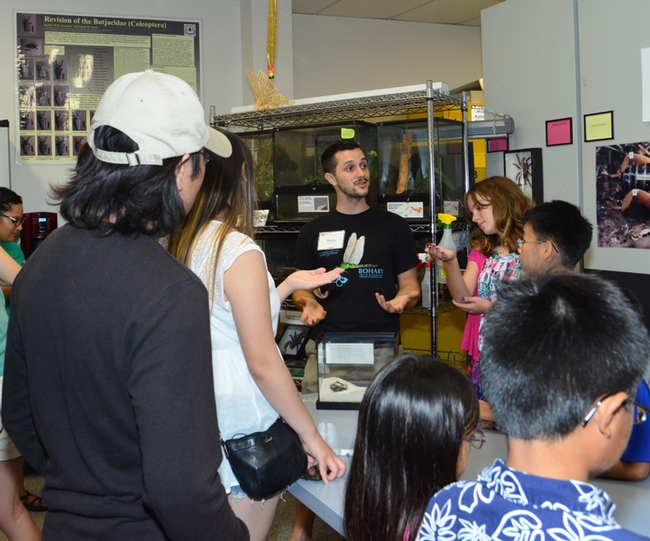- Author: Kathy Keatley Garvey
If Cinderella were a moth, what species would she be? Maybe this tiny, shimmering one.
When we spotted this visitor during National Moth Week on a Mexican sunflower, Tithonia rotundifola, in our pollinator garden, we asked our Bohart Museum of Entomology associates for identification.
John "Moth Man" De Benedictis and Greg Kareofelas said it appears to be a Cadra figulilella, the raisin moth, family Pyralidae.
How did the raisin moth get its name? Most likely because it was first identified on Muscat raisins in Fresno County in 1928, according to Wikipedia. It's a pest in its larval stage, feeding on such dried fruits as raisins and dates. "The larvae in particular are herbivorous and prefer to feed on dry fruits on the ground or still on the plant. In particular they feed on fallen figs, ripe carob pods, grapes, cottonseed cake, cacao beans, prunes, peaches, apricots, pears, and more." This species is found throughout much of the world, including California, Florida, the Eastern Mediterranean region, and some parts of Australia, South America, and Africa.
Remember the Cinderella story? After her father died, Cinderella lived with her cruel stepmother, Lady Tremaine, and two evil stepsisters, Anastasia and Drizella, who forced her to work as their maid. When Cinderella received Prince Charming's ball invitation, she wanted to wear her deceased mother's party dress but her jealous stepsisters destroyed it. Like magic, her Fairy Godmother appeared and gifted her with a a silver shimmering gown and tiny glass slippers. Bottom line, Cinderella loses a slipper at the ball, when the Fairy Godmother's magic vanishes. Prince Charming learns it belongs to Cinderella, and they marry and live happily ever after.
Not sure if this moth lived happily ever after, but poof, it vanished shortly after I took this image.
Happy National Moth Week...
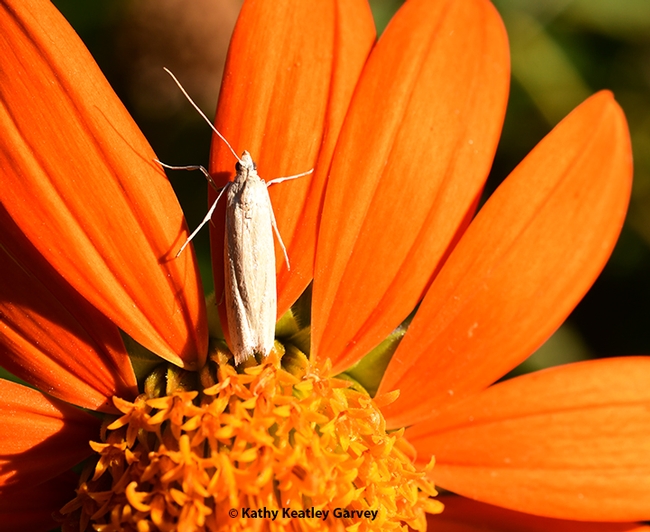
- Author: Kathy Keatley Garvey

The set-up? It's basically a white sheet lit by an ultraviolet (UV) light, which attracts night-flying critters.
What a treasure to see this beautiful moth!
The large tannish-colored moth (wingspan 4 to 6 inches) is known for the striking eyespots on its hind wings--which probably distract, startle or confuse predators. In fact, the name originates from the cyclops Polyphemus in Greek mythology.
Karofelas, a longtime naturalist and avid photographer, decided to rear the species and photograph the life cycle. He credited UC Davis entomology student and researcher Gwen Erdosh (who goes by "Gwentomologist" on Instagram) with showing him "how to keep it alive in a critter cage.”
The Polyphemus silk moth laid flat, light-brown eggs, and the eggs hatched into larvae or caterpillars. They fed on the leaves of a host plant, the Valley oak. Kareofelas said he reared and released a total of nine moths. They emerged as adults on June 21. The entire process, from egg to larva to cocoon to adult, took less than two months.
In celebration of National Moth Week, July 17-25, Karoefelas created a video of the process, now posted on YouTube at https://youtu.be/Ppsa7P7wr8M.
This Polyphemus moth is thought to be the same species that Alice of Lewis Carroll's "Alice's Adventures in Wonderland" encountered, Kareofelas related.
Excerpts from the book:
The Caterpillar and Alice looked at each other for some time in silence....
'Who are you?' said the Caterpillar.
This was not an encouraging opening for a conversation. Alice replied, rather shyly, 'I — I hardly know, sir, just at present — at least I know who I was when I got up this morning, but I think I must have been changed several times since then.'
'What do you mean by that?' said the Caterpillar sternly. 'Explain yourself!'
'I can't explain myself, I'm afraid, sir' said Alice, 'because I'm not myself, you see.'
'I don't see,' said the Caterpillar.
'I'm afraid I can't put it more clearly,' Alice replied very politely, 'for I can't understand it myself to begin with; and being so many different sizes in a day is very confusing.”
This moth is just one of some 250 different species of moths that Kareofelas has recorded in his backyard. Blacklighting is something anyone can do, he says.
"Polyphemus moths are our most widely distributed large silk moths," according to Wikipedia. "They are found from southern Canada down into Mexico and in all of the lower 48 states except for Arizona and Nevada."
"Polyphemus caterpillars gain protection from predators by their cryptic green coloration. When threatened they often rear the front part of the body in a 'Sphinx' pose--possibly to make them less caterpillar-like to a predator. If attacked, polyphemus caterpillars as well as those of many other bombycoid moths make a clicking noise with the mandibles-- sometimes as a prelude to or accompanied by defensive regurgitation of distasteful fluids. Brown et al. (2007) found that ants and mice were deterred by the regurgitant of the polyphemus caterpillars and suggested that the clicking is a warning of the impending regurgitation."
The Bohart Museum, located in Room 1124 of the Academic Surge Building on Crocker Lane, UC Davis campus, is temporarily closed to the public due to COVID-19 pandemic precautions. COVID, however, hasn't stopped the Bohart scientists from publicly celebrating National Moth Week via videos posted on their home page (more to come).
The Bohart is the home of nearly 8 million insect specimens, plus an gift shop (now online) and a live "petting zoo" (think Madagascar hissing cockroaches, walking sticks and tarantulas.) The insect museum is directed by Lynn Kimsey, UC Davis distinguished entomology professor, Department of Entomology and Nematology. Entomologist Jeff Smith curates the Lepidoptera (moths and butterflies) collection.
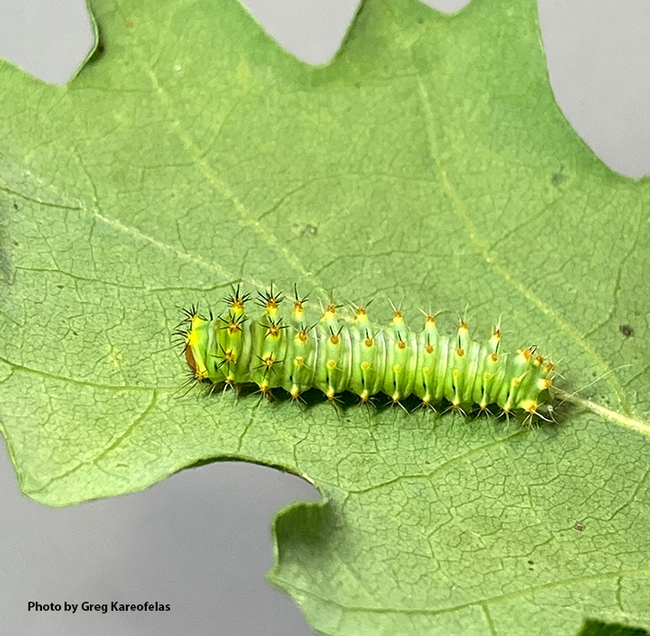
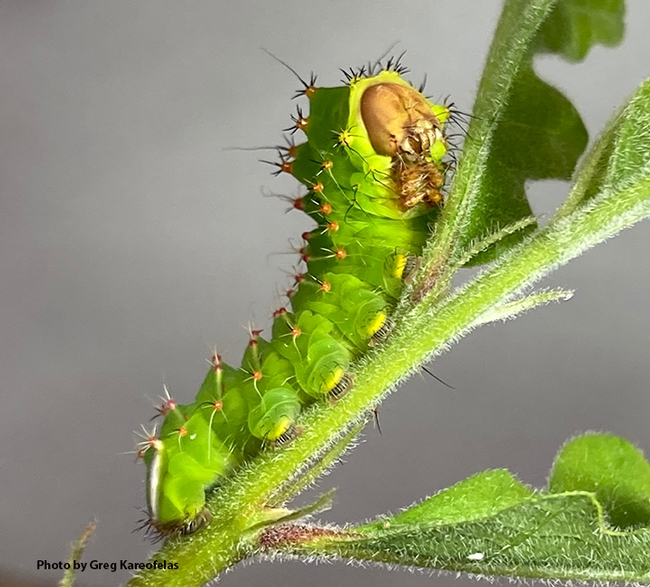
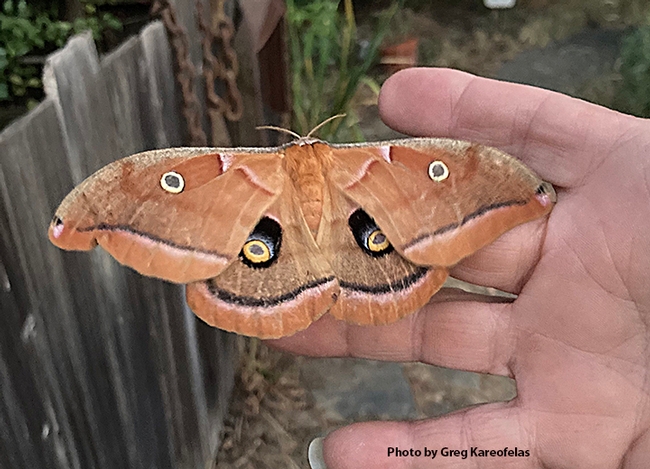
- Author: Kathy Keatley Garvey
It's National Moth Week, which, according to the officials, is a time to celebrate "the beauty, life cycle and habitats of moths."
So "moth-ers" of all ages and abilities "are encouraged to learn about, observe and document moths in their backyards, parks and neighborhoods."
We remember, pre-COVID pandemic days, when the UC Davis Bohart Museum of Entomology celebrated National Moth Week with a Moth Night. (See what the entomologists collected at the 2019 Moth Night.) Earlier, Jessica Gillung, a doctoral candidate at UC Davis, posed with Atlas moths from the museum. Time flies--as do the moths.
Jessica went on to receive her doctorate from UC Davis in December 2018, writing her dissertation on “Systematics and Phylogenomics of Spider Flies (Diptera, Acroceridae)," encompassing genomics, phylogenetics, systematics, and comparative analyses. She is now an assistant professor at McGill University, Montreal.
If COVID-19 precautions hadn't temporarily closed the Bohart Museum, entomologist Jeff Smith, curator of the Bohart's Lepidoptera collection, would be there to talk moths and how they differ from butterflies.
Smith estimates that of the 17,500 described species of butterflies in the world, about 750 of those occur in North America. "However, in North America there's 160,000, easily, species of moths. Moths are far more numerous than butterflies, and in particular, with the little tiny moths, it's estimated by experts in those groups, that at least 90 percent of the species still have not been described. They are sitting waiting for someone to identify them and give a name to them. So if anybody is interested in insects and wondering if there's still something left to do, the answer is absolutely yes."
At the 2021 UC Davis Picnic Day, the 107th annual, Smith delivered a well-received presentation on "Mimicry in the Butterflies and Moths with Jeff Smith." If you missed it, it's available online on YouTube at https://youtu.be/8ZccezxhhK4.
Meanwhile, turn on your porch light and see what's flying around...like a moth to a flame (light).
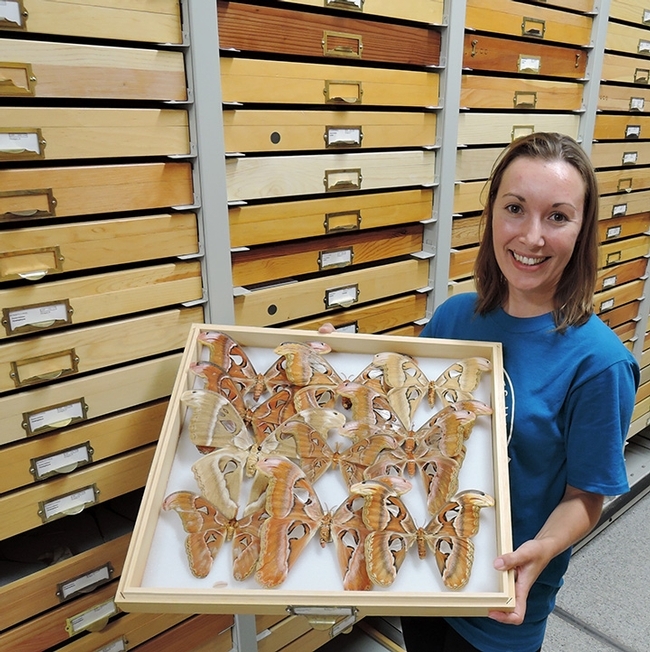
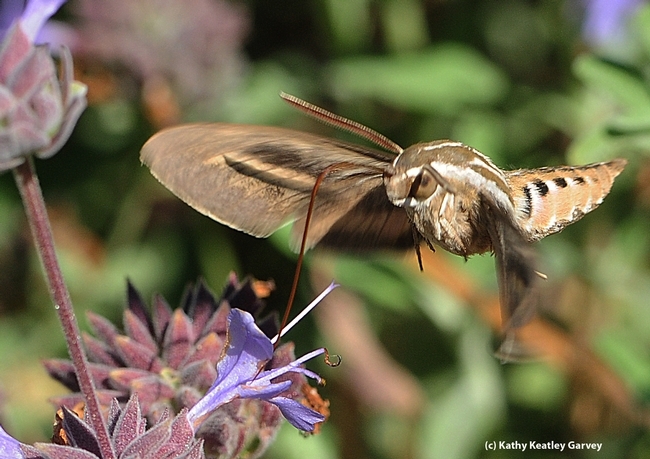
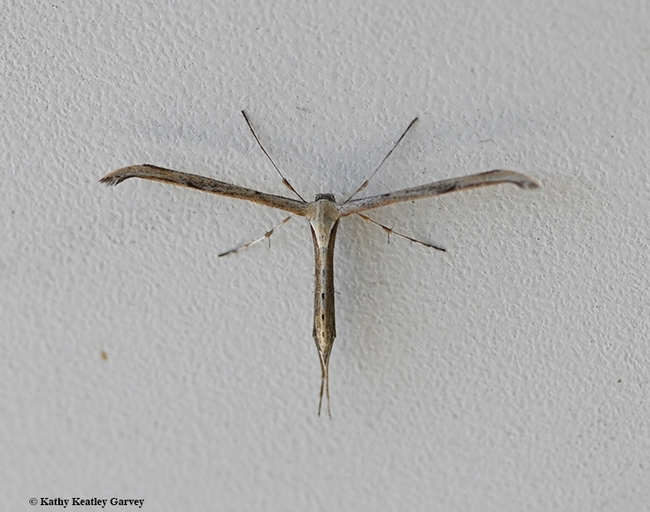
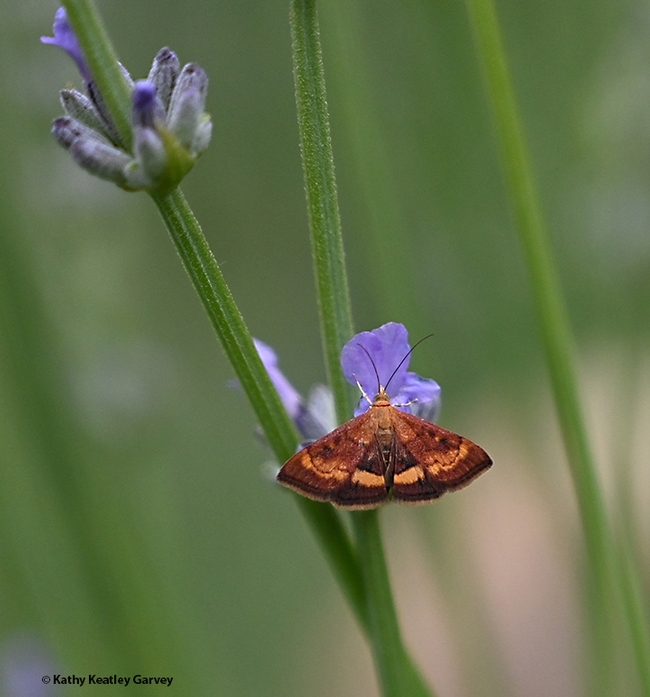
- Author: Kathy Keatley Garvey
Are you ready to celebrate Moth Night at the Bohart Museum of Entomology at the University of California, Davis?
Mark your calendar for 8 p.m. to 11 p.m. on Saturday, July 21.
That's when the Bohart Museum will join forces with National Moth Week, July 21-29, to celebrate the beauty, life cycles and habitats of moths. It's free, open to the public, and family friendly.
The Bohart, located in Room 1124 of the Academic Surge Building, Crocker Lane, is hosting the "Moth Night" both inside and outside the museum. You will see scores of moth and butterfly displays inside. Outside, moth light traps will be set up so you can see what moths are drawn to the blacklighting displays.
The UC Davis event is one of only two public events scheduled in California during the week; the other is in San Mateo County on July 28.
Bohart scientists will be on hand to discuss moths and answer questions. They include three Bohart associates: entomologist Jeff Smith of Rocklin, curator of the the moth and butterfly specimens; and "Moth Man" John DeBenedictis and naturalist and photographer Greg Kareofelas, both of Davis, who will staff the light traps/blacklighting displays. The best time to see the moths in the light traps is later in the evening, closer to 10, according to Lynn Kimsey, director of the museum, and Tabatha Yang, education and outreach coordinator.
"We will focus on colorful moths of the night--night rainbows if you will and the biodiversity of tropical moths," Yang said. A family craft activity is planned. Last year the family craft activity featured making moth-shaped window ornaments resembling stained glass.
Free refreshments--cookies and hot chocolate--will be served. Common Grounds, a Davis coffee shop. will be providing the large containers of hot water for the event.
One of the "oh, wow!" moths is Attacus atlas (Atlas moth), found in the rainsforests of Asia. One of the largest moths in the world, it has a wingspan that can measure 10 to 11 inches.
Last year more than 15 species landed on the blacklighting display. The first moth to arrive was the alfalfa looper moth, Trichopusia ni. The most striking: the grape leaffolder, Desmia funeralis.
Some facts about moths, from the National Moth Week website:
Why moths?
- Moths are among the most diverse and successful organisms on earth.
- Scientists estimate there are 150,000 to more than 500,000 moth species.
- Their colors and patterns are either dazzling or so cryptic that they define camouflage. Shapes and sizes span the gamut from as small as a pinhead to as large as an adult's hand.
- Most moths are nocturnal--others fly like butterflies during the day.
- Finding moths can be as simple as leaving a porch light on and checking it after dark. Serious moth aficionados use special lights and baits to attract them.
The Bohart Museum houses a global collection of nearly eight million specimens. It is also the home of the seventh largest insect collection in North America, and the California Insect Survey, a storehouse of the insect biodiversity. Noted entomologist Richard M. Bohart (1913-2007) founded the museum. It maintains a live "petting zoo," featuring Madagascar hissing cockroaches, walking sticks, tarantulas, and praying mantids. The museum's gift shop, open year around, includes T-shirts, sweatshirts, books, jewelry, posters, insect-collecting equipment and insect-themed candy.
The Bohart Museum's regular hours are from 9 a.m. to noon and 1 to 5 p.m. Mondays through Thursdays. It is closed to the public on Fridays, Saturdays and Sundays and on major holidays. Admission is free.
More information on the Bohart Museum is available on the website or by contacting (530) 752-0493 or email bmuseum@ucdavis.edu.
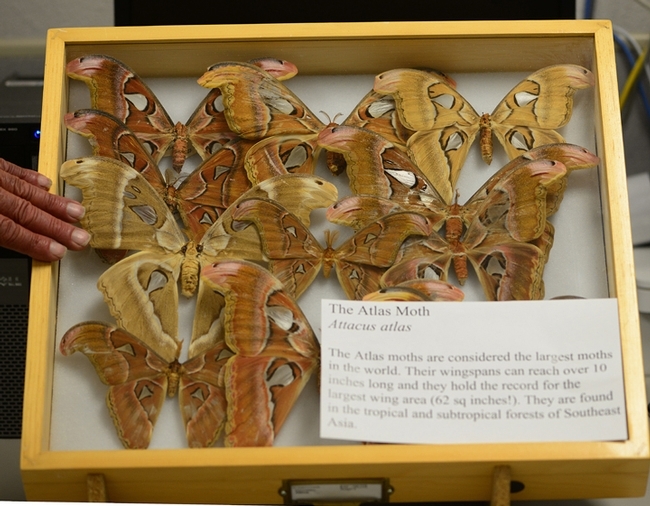
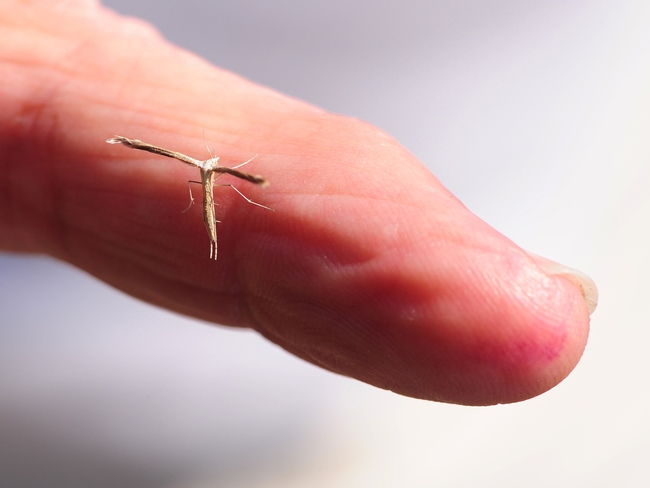
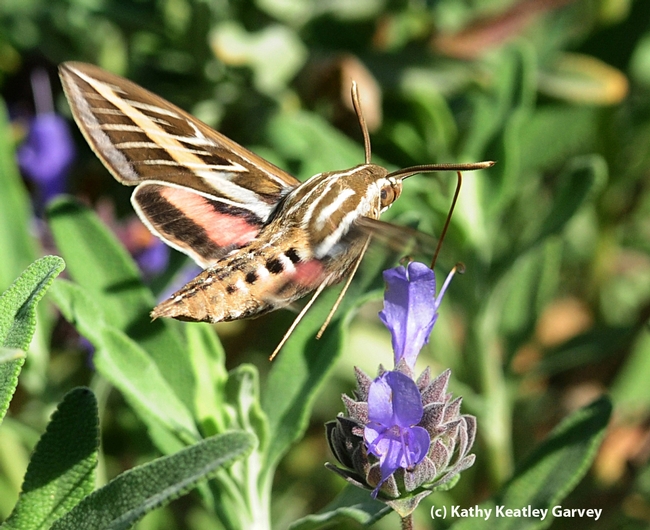
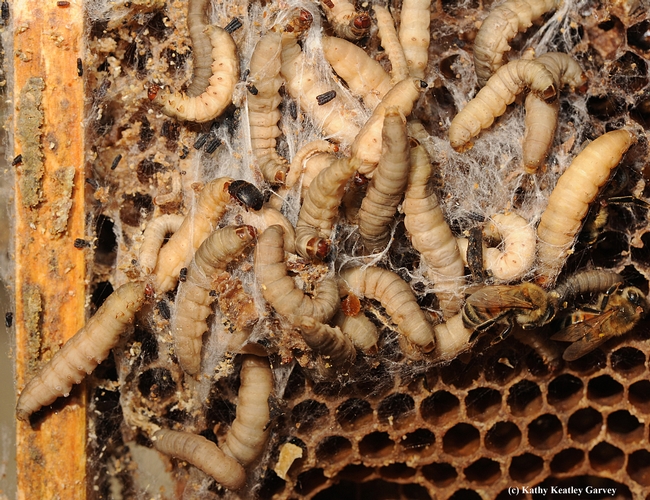
- Author: Kathy Keatley Garvey
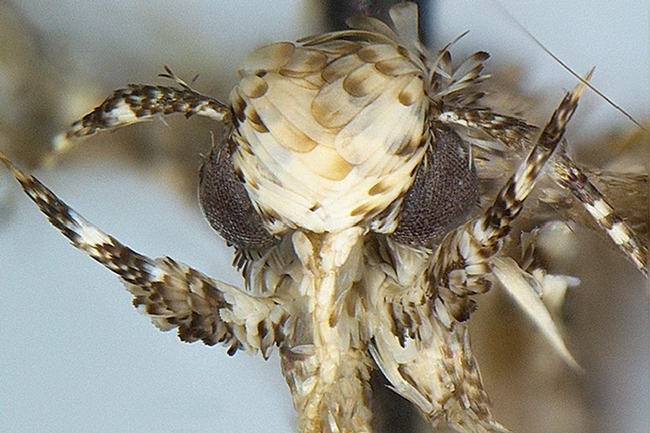
The Bohart Museum of Entomology open house on Saturday night, July 22, promises to be a fun and educational event. It's free and open to the public.
The open house, celebrating National Moth Week, will take place from 8 to 11 p.m. in Room 1124 of the Academic Surge Building, and also outside, where two blacklight traps will be set up to collect moths and other insects. The event is free and open to the public and is family friendly.
A $75,000 scanning electron microscope, on loan from Hitachi Corp. for research and outreach, will be available for visitors to see moth scales and other insect parts.
Bohart Museum senior scientist Steve Heydon and two Bohart associates "Moth Man" John DeBenedictis and naturalist-photographer Greg Kareofelas of Davis will set up the light traps and answer questions. Bohart associate Jeff Smith of Sacramento, who curates the butterfly and moth specimens, will field questions about moths and butterflies and show specimens from around the world.
The family craft activity will be to make a moth-shaped window ornament resembling stained glass, said Tabatha Yang, the Bohart Museum's education and outreach coordinator. Free refreshments--hot chocolate, herbal tea and cookies--will be served. Common Grounds of Davis is donating part of the refreshments.
On permanent display is the Trump moth, Neopalpa donaldtrumpi, a relatively new species that Bohart Museum scientists collected at Algodones Dunes, bordering Arizona and the Mexican state of Baja California. Evolutionary biologist and systematist Vazrick Nazari of Canada named it donaldtrumpi because the yellow scales on the tiny moth's head reminded him of the hairstyle of Donald Trump, then president-elect. The orange-yellow moth has a wingspan of less than one centimeter.
Nazari published the piece on the Trump moth Jan. 17, 2016 in the journal Zookeys and explained the name: “The reason for this choice of names is to bring wider public attention to the need to continue protecting fragile habitats in the U.S. that still contain many undescribed species." The Neopalpa donaldtrumpi belongs to the family, Gelechiidae of the Lepidoptera order.
The Bohart Museum, directed by Lynn Kimsey, UC Davis professor of entomology, houses nearly eight million specimens; a year-around gift shop; and a live "petting zoo," including Madagascar hissing cockroaches, walking sticks, and orchid praing mantis and tarantulas.
For more information on the open house, email bmuseum@ucdavis.edu or call (530) 752-0493.
